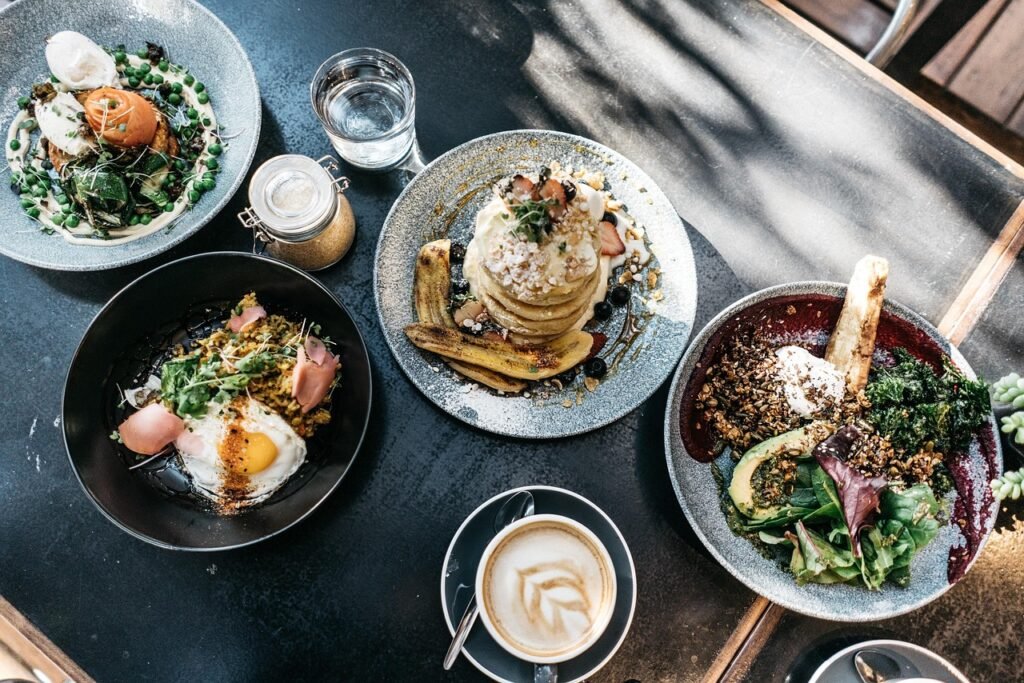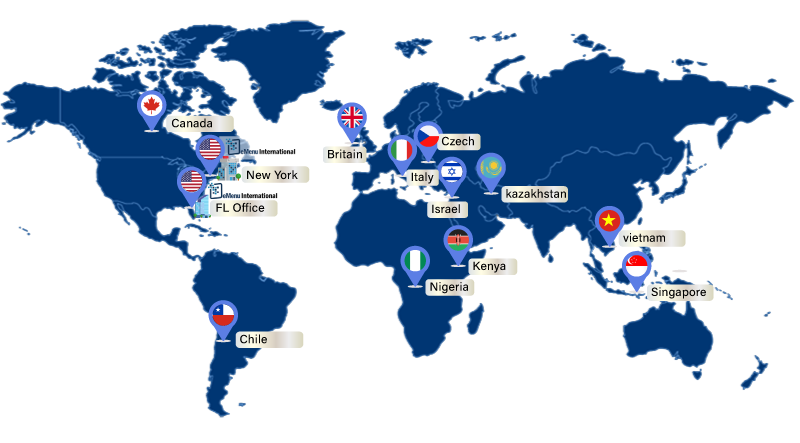Running a busy restaurant means every detail counts for keeping guests happy and coming back. If you’re searching for ways to improve service in your restaurant, you’re likely dealing with common issues like slow wait times, staff mix-ups, or inconsistent experiences. These can hurt reviews and sales fast. Focus on smart changes that enhance restaurant customer service, from better training to tech upgrades.
Tools like interactive digital menus make ordering smoother and more engaging.Features for iPad food menus highlight dishes with photos and details, or specialized iPad wine lists upsell drinks easily. Small tweaks in these areas lead to big wins in efficiency and guest loyalty.
Train Your Staff for Consistent Excellence
Start with your team because they interact directly with guests. Trained staff handle orders quickly, answer questions right, and make diners feel welcome. Without solid training, mistakes pile up, like wrong dishes or ignored requests, which frustrate customers.
Begin with basics: Teach polite greetings, active listening, and menu knowledge. Have staff taste items so they can suggest pairings honestly. Role-play scenarios, like busy rushes or complaints, to build confidence. Teamwork matters too, so clarify roles between servers, hosts, and kitchen crew to avoid delays.
Data shows this pays off. According to the National Restaurant Association’s 2025 report, 73% of diners say responsive staff boosts their experience. Plus, high employee engagement lifts profitability by 21%. Invest in ongoing sessions, maybe weekly huddles, to review feedback and refine skills.
Don’t stop at new hires. Experienced workers need refreshers on trends, like allergy handling or speed techniques. This cuts errors and speeds service, turning average visits into memorable ones.
Gather and Act on Customer Feedback
Feedback tells you what’s working and what needs fixing. Ask guests how their meal went, and use that info to tweak operations. Ignoring it means missing chances to improve restaurant customer service.
Use simple methods: Send quick surveys via email or add questions to receipts. In-person chats work well too, like a manager checking tables. Online reviews on sites like Google or Yelp give public insights. Respond to all, good or bad, to show you care.
Stats highlight why this is key. A Deloitte study notes 60% of customers return often to places with positive vibes. But an even higher percentage won’t come back after one bad time. Track common complaints, such as long waits, and address them fast.
Turn insights into action. If feedback points to slow service, adjust staffing shifts. For menu gripes, update items. Tools like digital systems help here by letting guests note preferences upfront.
Make it routine. Review feedback weekly with your team to spot patterns and celebrate wins. This builds a culture focused on guests, leading to better ratings and more repeats.
Handle Complaints Quickly and Gracefully
Every restaurant gets complaints, but how you fix them defines your service. Turn unhappy guests into loyal ones by listening and resolving issues on the spot.
First, train staff to stay calm. Apologize sincerely, ask for details, and offer fixes like a free item or discount. Follow up later to ensure satisfaction. This shows respect and often flips negative reviews.
Numbers back this up. Some diners pick spots based on online reviews. Quick resolutions can boost those scores. Plus, if complainers are satisfied after, they spend 25% more long-term.
For tech help, digital menus reduce order errors by showing visuals and details clearly. See how iPad food features minimize mix-ups.
Document complaints to prevent repeats. If a dish often disappoints, retrain kitchen staff or tweak the recipe. This proactive step strengthens overall service.
Use Technology to Streamline Operations
Tech speeds things up and cuts errors, making service smoother. From reservations to payments, right tools save time for staff and guests.
Adopt POS systems that integrate with inventory for real-time updates. Contactless payments and apps for ordering reduce lines. AI can even suggest menu items based on past choices.
Recent data from the NRA 2025 report 95% of owners agree technology boosts efficiency.
Favor solutions like interactive tablets over basic QR codes. They engage guests with photos, filters for diets, and easy upsells. For wine selections, digital wine tools add value with notes on origins.
Start small: Pick one tool, train your team, and measure impact on wait times or sales. This keeps your restaurant modern and efficient.
Personalize the Dining Experience
Guests love feeling special. Use data to tailor service, like remembering favorites or noting occasions.
Track preferences in your CRM: Birthdays get a free dessert, regulars a preferred table. Greet by name from reservations.
This works wonders. Personal touches increase loyalty by 75%.
Digital menus help by letting guests filter for vegan or gluten-free options instantly.
Keep it genuine. Overdo it, and it feels forced. Balance with quick, attentive service for best results.
Optimize Your Menu and Kitchen Flow
A clear menu and efficient kitchen cut wait times and improve accuracy. Revise menus to highlight top sellers and easy-prep items.
Design for readability: Use photos, descriptions, and icons for allergens. Update digitally to add specials fast.
Kitchen side: Streamline layouts for faster assembly. Train on timing so dishes arrive hot together.
Tools like iPad menus speed orders and reduce waste.
Test changes: Track sales before and after to refine further.
Manage Wait Times Effectively
- Long waits kill buzz. Give accurate estimates and keep guests updated to maintain excitement.
- Use software for reservations and waitlists. Text updates if delays happen.
- Digital tools help by allowing pre-orders. Wine features engage waiting guests.
- Train hosts to manage flow, seating efficiently without rushing.
Enhance Ambiance and Cleanliness
- A clean, inviting space sets the tone. Regular deep cleans and thoughtful decor make guests comfortable.
- Focus on lighting, music, and layout for cozy feels. Colors like warm tones invite lingering.
- Keep standards high with checklists. For green touches, digital menus cut paper use.
- Update seasonally for fresh vibes.
Implement Advanced Digital Menu Systems
Switch to digital for a modern edge. eMenu International leads with iPad solutions that replace paper menus, boosting engagement.
Their systems increase food sales 6-9% and drinks 15-22% by highlighting items vividly. Quick updates mean no reprints, saving costs.
Multi-language support serves diverse crowds. Time-based menus switch from breakfast to dinner seamlessly.
Compared to others, eMenu offers free upgrades and dedicated managers, ensuring smooth rollout. It reduces staff hours 15% for more guest focus.
Integrate for upsells, like wine pairings with details. This outperforms basic apps by keeping human touch.
Reward Loyal Customers
- Build loyal customers with programs that thank regulars. Offer points for visits, redeemable for freebies.
- Use data to send targeted offers, like discounts on favorites.
- This drives 75% higher lifetime value.
- Digital menus track habits easily.
- Keep it simple: Easy sign-up, clear benefits.
Borrow Ideas from Successful Peers
- Look at top restaurants for inspiration. Note their greeting styles or table setups.
- Adapt without copying: Add unique twists.
- This sparks innovation. For example, if they use tablets well, enhance with digital tools.
- Visit or read reviews to gather tips. Share with your team for group input.
Frequently Asked Questions
How can restaurants maintain high service levels during peak hours?
During busy times, prioritize clear communication among staff to coordinate orders and seating efficiently. Implement systems that allow guests to view menus and place orders digitally, reducing pressure on servers and minimizing errors. This approach ensures smoother operations, letting teams focus on hospitality aspects like checking in with diners promptly.
What benefits do interactive tools bring to restaurant service?
Interactive tools enhance guest engagement by providing detailed item descriptions and visuals right at the table. They support customization for dietary needs, making the dining process more inclusive and enjoyable. Such features, found in iPad food menus, help streamline choices without overwhelming staff.
How does employee motivation impact overall restaurant service?
Motivated employees deliver more attentive and enthusiastic service, creating positive interactions that encourage guest loyalty. Recognize achievements through feedback sessions to foster a supportive environment. This leads to lower turnover and a team better equipped to handle diverse service scenarios.
Why is adaptability important in improving restaurant service?
Adaptability allows restaurants to respond to changing guest preferences, such as incorporating feedback for menu tweaks or adjusting layouts for comfort. It involves staying updated on industry trends to refine daily practices. Tools like iPad wine lists offer flexibility in presenting options tailored to occasions.
What role does consistency play in restaurant customer satisfaction?
Consistency builds trust, as guests expect the same quality each visit, from greetings to meal presentation. It requires standard procedures across shifts to avoid variations in experience. Emphasizing this in training helps maintain standards, ensuring every interaction reflects the restaurant’s commitment to excellence.



